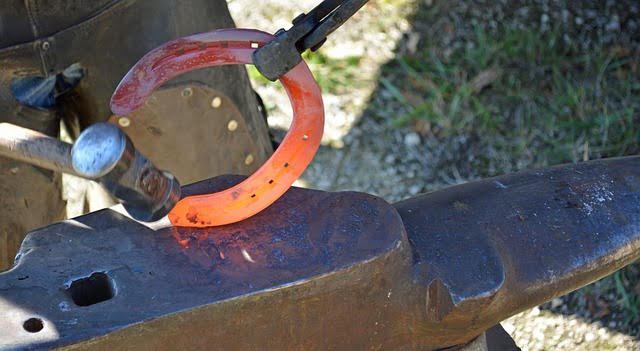Cracked heels in horses

Cracked heels in horses
What are cracked heels?
There are many factors that can cause the skin to soften or crack, allowing bacteria or other infectious things to get in. Skin irritation, bumps, excessive moisture, fungi, mites, or even a congenital predisposition such as feathered breeds can suffer from lesions that usually start at the heel and may progress up the leg. This infection can cause hair loss, a greasy appearance with exudate, thick crusting or crusting, and can lead to lameness if the condition becomes too painful. Treatment is successful in many cases, although some causes of cracked heels require longer and more intense treatments.
Cracked heels, also known as mud fever, exanthema dermatitis, or oily heels, refer to a condition of the skin on the legs that becomes prone to infection. It generally results from exposure to wet weather conditions that can soften the skin, allowing infection to seep in. This can cause itching, pain, and crusting in the back of the leg, from the heel to the knee.
Symptoms of cracked heels in horses
Symptoms of this condition most commonly appear on the hind legs, from the heel to the knee, and include:
- lesions on the leg
- Hair loss
- skin peeling
- itchy skin
- Peel over lesions
- skin folds
- Fluid buildup in the skin
- serum discharge
- skin ulcers
- Thick and hard peel
- Pain
- swelling
- Self-trauma, such as horse biting and limb scratches
- foot the seal
- lameness
Causes of cracked heels in horses
Cracked heels are caused by irritated skin that can allow bacteria to enter and infect the foot and leg. Some of the factors that can lead to this irritation are:
- Wet conditions that cause skin softening
- Abrasions or trauma, such as rubbing mud on soft skin
- a bacterial infection, such as Dermatophilus congolensis, Staphylococcus, or pseudomonas specie
- fungal infection
- Mites, such as placental scabies
- Some types of soil and pastures, such as sandy yards or coarse vegetation
- Excessive leg washing
- irritating bedding
- Improper placement of bandages or shoes
- Immune-mediated conditions, such as pastern and cannon foliar vasculitis, or pemphigus foliar
- Any disease or condition that weakens the immune system
- photosensitivity
- Genetic predisposition, such as feathered breeds
- sensitive
- tumor
Diagnosis of cracked heels in horses
To diagnose cracked heels, your vet will need to examine your horse. Any information about your horse’s management and living conditions, and about other horses in the population, such as those that may have mites, can help your veterinarian with a diagnosis.
Your vet may take acetate strip prints, hair samples, direct swabs from collected serum, skin scrapings, or samples of any scabs to test for fungi, bacteria, or mites. The mites are best found in a sample of the deep skin on the edges of the lesion. A skin biopsy may be taken if a tumor or an immune condition is suspected.
Treating cracked heels in horses
Treatment depends on the cause of cracked heels. The primary treatment is to remove the infection and allow the skin to heal, while treating the underlying condition.
First, the hair is usually clipped to better control the area. Removal of the crust is not generally recommended, but it may help in cases of Dermatophilus congolensis, where it cannot survive with the presence of oxygen. This can be done after soaking the legs in an antibacterial and antifungal solution every 3 to 4 days, or washing them with an antibacterial shampoo. Only take soft peels that are ready to fall off. After that, rinse well and dry the legs well using a clean towel. An antibacterial cream can be used daily after washing the legs.
During treatment, the horse should be immobilized and kept away from any wet conditions or mud contamination. Cleaning the area with a medicated shampoo, iodine, or chlorhexidine can boost the skin’s natural bacteria. A barrier cream can be used if you cannot stabilize the horse. You can also use bandages to keep the affected areas clean.
Other treatments that may be prescribed depending on your horse’s FIN condition can include anti-inflammatory and pain-relieving medications, vitamin E and omega fatty acid supplements, topical or systemic steroids for photosensitivity, placental mange, leukocytic vasculitis, or the use of ultraviolet stockings. And ban sunlight for light-sensitive horses.
Cracked heels recovery in horses
Recovery depends entirely on the cause of the cracked heel, and may be a lifelong condition in some cases. Most cases respond well to treatment, although the underlying condition needs to be treated as well.
You may be given medications at home, as well as a treatment plan that includes washing the area with a special lotion, shampooing, and applying antibacterial ointments. Keep the affected horse’s leg clean, dry, and waterproof if necessary. Minimize or limit your horse’s exposure to wet conditions and muddy areas.
Although in many cases, cracked heels cannot be prevented, you can reduce your horse’s chances by keeping your horse from conditions that can cause moisture to remain on the legs. Some of the ways to achieve this are by drying the legs well after exercise, avoiding greasy lotions, and removing the dry mud later rather than washing it right away.



